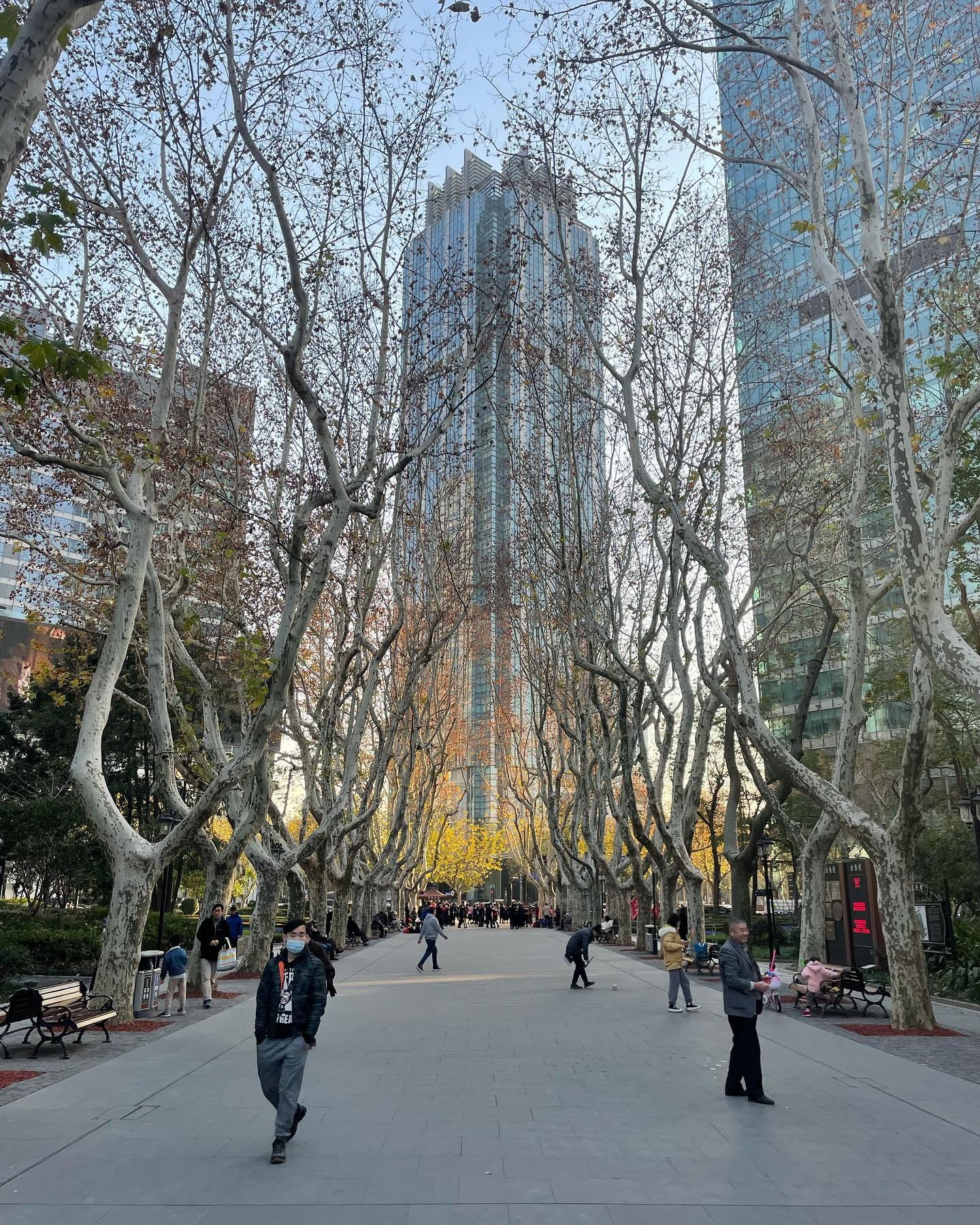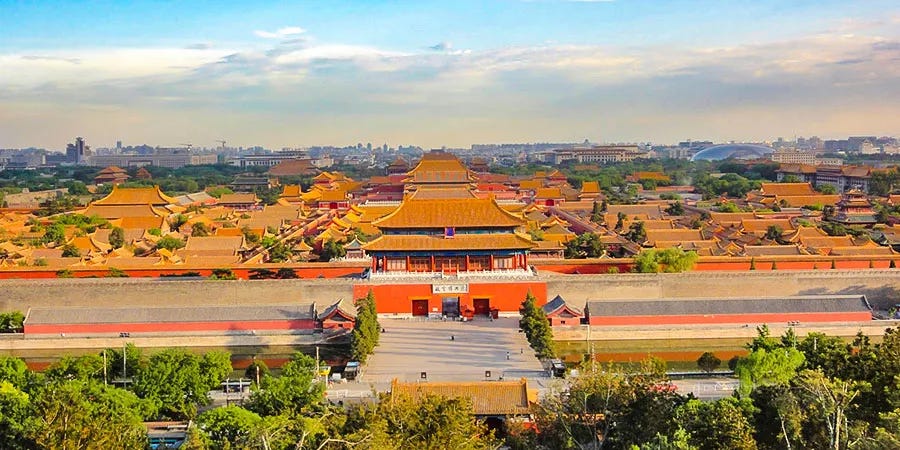When Money Flees, Power Follows
The silent erosion of the Chinese state
It was one of those perfect Shanghai autumn Sundays — when the sweltering summer downpours give way to clear skies, crisp temperatures, and golden gingko leaves. A perfect day for one of China’s greatest national pastimes: shopping. Yet as I walked down Zhongshan Road — a famed pedestrian shopping street just off the Bund — I found myself almost entirely alone. Many storefronts were permanently shuttered; the few that remained sold cheap trinkets to miniscule tourist crowds.
It was November 2020. At the time, many international headlines praised China’s apparent economic resilience during the global COVID-19 slump — a sharp contrast to what I saw on the ground. I was working in commodity research then, focusing on steel, which in the world’s largest steel market meant probing deeply into the fundamentals underpinning the world’s second-largest economy. Just a few months earlier, the central government had introduced its now-infamous Three Red Lines policy, abruptly restricting credit to heavily indebted real estate developers.
“I think they’ve overshot it this time. The debts are real, and this sudden jolt could bring it all down,” a colleague from another firm remarked to me. While the shuttered shops probably weren’t directly caused by this policy — China’s consumer economy had been fragile for years, and COVID only compounded it — he was right about the broader trajectory. For anyone watching China even casually, the subsequent years have brought a steady drumbeat of credit defaults, spiraling local debt crises, and accelerating capital flight — unmistakable signs of deepening structural distress in China’s economy.
Many Western analysts still hunt for a dramatic “Lehman moment” — a sudden implosion they believe will reveal China’s true crisis. Yet the real signals have been in plain sight for years. Satellite images reveal entire “ghost fields” of brand-new electric vehicles — hundreds of thousands of shiny EVs parked indefinitely in remote lots, technically “sold” but never moving. The “ghost cities” phenomena has persisted for many years, with the government now quietly demolishing partially completed towers in an effort to erase evidence of speculative excess and maintain the illusion of controlled growth. Meanwhile, record-breaking capital outflows have flooded into Hong Kong crypto markets, Singaporean banks, and Vancouver condos – just to name a few. Each of these transactions signals a quiet exodus, moving behind the façade of official growth narratives.
While some await a dramatic collapse and others herald an unstoppable Chinese century, both groups miss the point. Behind elaborate propaganda campaigns and easy soundbites for foreign reporters lies a deeper truth: liquidity is the ultimate infrastructure of power. When it remains centralized and trusted, sovereignty holds. When it fragments and flees, sovereignty dissolves in a process that often starts long before any visible collapse appear on the surface.
This essay traces that often quiet process through China’s dynastic past and its precarious present, revealing a historical blueprint for how states corrode from the inside out.
A November afternoon in Shanghai’s Xiangyang Park.
Historical Foundations: Capital Flight as Regime Decay
While each Chinese dynasty collapsed under its own unique pressures, a striking throughline emerges across centuries: liquidity did not vanish overnight in dramatic implosions, but rather seeped quietly outward through networks of private actors, regional power centers, and relational alliances. Before foreign invaders or final rebellions, it was this gradual migration of capital and trust away from the imperial core that hollowed regimes from within. The following snapshots illuminate how this silent financial erosion repeated itself across eras.
Early Dynastic Precedents: Liquidity Fragmentation and Collapse
Throughout the more than two millennia of unified imperial Chinese history, nearly every major collapse saw liquidity—the lifeblood of sovereignty—consistently spill outward, hollowing the state from within long before any formal downfall. During the Han (206 BCE–220 CE) and Tang (608–907 CE), local warlords and elite landowners diverted resources to regional strongholds, undermining central tax extraction and fracturing state authority. The Song dynasty (960–1279 CE) introduced an even sharper precedent amid the age’s rapid commercialization: under immense military and fiscal pressures, the state turned to advance tax financing and proto-debt arrangements with wealthy merchant creditors. This proto debt dependence entrenched financing at the local level, further diffusing liquidity and eroding central control.
Crises — such as invasions and large-scale rebellions — consistently compounded internal fiscal vulnerabilities. Rather than reinforcing the imperial center, these incidents drove elites to protect private liquidity, diverting resources into local power bases and relational networks. This centrifugal pull fragmented state sovereignty from within, hollowing regimes long before formal collapse.
Ming Dynasty: Spanish Silver and the Fall
The Ming dynasty (1368–1644 CE) stood at the threshold of China’s modern era, coinciding with the European conquest of the Americas and the rise of global maritime trade. As Spanish silver poured into Asia via Manila, the Ming became deeply entangled in global financial circuits for the first time in their country’s history. With Chinese porcelains, silks, and teas flooding the global market, the silver it exchanged these for eventually sustained the Ming tax base, creating unprecedented external vulnerabilities.
A disruption in global silver supplies that started in the 1630s resulted in massive shocks to the Ming imperial system, leaving its fiscal core exposed. As Richard von Glahn discusses in his book, The Silver Way, local elites rapidly diverted liquidity to private reserves rather than the imperial treasury — an early example of elite opportunism fracturing sovereignty long before military defeat. The breakdown in fiscal trust in the empire accelerated tax failures, eroded state authority, and ultimately catalyzed the dynasty’s collapse from within.
In 1644 — a few short years after initial supply disruptions — rebels closed in on Beijing’s Forbidden City, the seat of Ming imperial power. Seeing no alternative, the Chongzhen Emperor hanged himself from a pagoda tree in Jingshan, an artificial hill behind the palace complex, marking the final symbolic collapse of Ming sovereignty. Three centuries later, Mao’s Red Guards exhumed the Chongzhen Emperor’s remains, subjecting them to a show trial during the chaos of the Cultural Revolution — a final indignity that illustrates how liquidity and legitimacy, once lost, can haunt a state across eras.
View of the Forbidden City, from Jingshan Park in Beijing. Here, from a pagoda tree, the last Ming Emperor reportedly hanged himself in 1644. Image source
Qing Dynasty: Merchant Guilds, Informal Finance, and Debt
During the Qing dynasty (1644–1911 CE), the Chinese state greatly expanded its territorial control — in fact, surpassing the extent of contemporary mainland China, reflecting the nomadic steppe origins of its ruling Manchu elite. As Madeleine Zelin describes in The Merchants of Zigong, the Qing increasingly struggled to maintain effective administrative reach, relying on local merchant networks and guilds to stabilize regional governance and manage fiscal functions. Over time, these groups accumulated significant power, evolving from auxiliary administrators into semi-autonomous actors that operated beyond imperial oversight. In the 19th century, forces from the Western world once again delivered external shocks to the system — this time not only through trade flows but also through direct military intervention.
The dual shocks of Western maritime pressure and the widespread inflow of opium destabilized the Qing’s domestic silver liquidity, triggering repeated crises. As the Qing state struggled to finance costly military campaigns and mounting administrative deficits, it increasingly turned to merchant guilds and elite local creditors, deepening its dependence on private loans and informal advances. These debts entrenched structural vulnerabilities: merchants, acting both as financiers and creditors, began diverting liquidity offshore to Southeast Asian diaspora networks rather than supporting the imperial treasury (Zhao 2013; Ng 2015).
Under this dual external and internal financial stress, relational trust between the state and its financial elite fractured under pressure, with merchant loyalty shifting toward group ties and offshore wealth preservation (Zelin 1995; Zhao 2013; Ng 2015). Throughout the 19th century, Qing liquidity simultaneously bled into Western coffers through the opium trade and into the networks of the overseas Chinese diaspora through the state’s mounting debts. In the end, these dynamics hollowed Qing sovereignty from within and accelerated the dynasty’s fiscal and political decline.
“The eunuchs stole things all the time… from priceless vases to rolls of silk, everything disappeared from the storehouses,” Pu Yi, the last Qing emperor, lamented in his 1964 autobiography, From Emperor to Citizen. Spared the indignity of a show trial like his final Ming counterpart, Pu Yi was instead heralded as a “reformed model citizen” by Mao’s Communist regime. He lived out his final days as a gardener in Beijing, dying of cancer in 1967 while under protective custody during the Cultural Revolution.
Historical Synthesis: The Ancient Precedent of Capital Flight
Across successive dynasties—from the Han and Tang to the Song, Ming, and Qing — external shocks to already vulnerable financial systems consistently triggered liquidity outflows rather than consolidation. During the Han and Tang periods, local elites hoarded revenues and redirected resources to regional power centers, fragmenting liquidity and accelerating collapse from within. The Song introduced systemic proto-debt crises: advance tax financing and relational creditor networks entrenched local financial autonomy, progressively weakening central authority. Under the Ming and Qing, disruptions to external inflows — silver in the Ming case and Western trade shocks in that of the Qing — catalyzed elite hoarding, liquidity flight, and the rise of offshore or private creditor networks, hollowing sovereignty from within.
In each case, elites prioritized private or offshore liquidity, relying on informal relational ties rather than accountable institutional structures. This dynamic repeatedly fractured internal trust and drained state resources, hollowing sovereign capacity long before formal regime failure. Ultimately, this pattern—shock to the system, relationally driven liquidity fragmentation, and rapid sovereign decline—is not merely a historical curiosity. It reveals a structural blueprint that persists into the present: relational opportunism and unaccountable networks consistently undermine financial sovereignty long before crises become visible on the surface.
Coming soon: Part II
In Part II, we move to the present—where dollar dependence, shadow reserves, and guanxi-fueled finance are hollowing China’s core, just as silver shocks and merchant flight did centuries ago.





